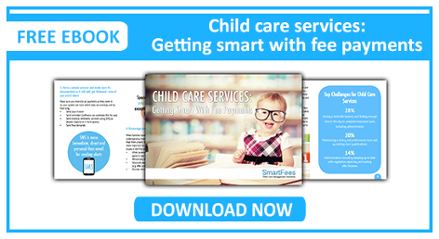Starting your own business is a dream for many Australians but it can be a tough one. A large number of small business fail within their first couple of years, and child care is a particularly challenging industry.

Child care businesses have high costs and low margins, and rely on very high occupancy rates to break even. As research company IBISWorld puts it: "The industry as a whole is barely profitable, primarily due to the presence of not-for-profit community-based centres, and a lack of economies of scale."
Despite this, there’s strong demand for childcare in many areas, some with year-long waitlists for places. There has also been a steady increase in the number of children using child care in recent years.
It seems like a sure bet: how can you go wrong if you’re practically guaranteed to be at 100% occupancy from day one?
The fact is that any business can fail, no matter how many customers it has or how much demand there is for its products and/or services. For businesses that failed in 2013-14, the top reason was inadequate cash flow or high cash use (41%) followed by poor strategic management of business (37%). These of course are related: if you’re not managing your business strategically, you’re going to run into cash flow problems. So what key steps can you take towards building an effective invoice and payment process? Read on to find out.
1. Understand what your current financial situation is
There are three things you need to figure out to know what your situation is:
- Find out how much each parent owes you
- Find out what’s overdue in parent payments
- Find out what’s overdue in total
2. Use benchmarking to decide what’s an acceptable level of outstanding invoices as well as bad debts for child care services
When it comes to outstanding invoices, guidelines can help you see if your service is in a preferred position or in trouble. This will help you make a more informed decision on the right time to act.
With bad debts (i.e. money you’ll never get back again because the child has left or the parent has never paid) it’s important to understand where your service sits, in regards to what’s considered ‘normal’ by the industry and accountants, so you can make the right decisions at the right time.
3. Decide upon the right approach with your management committee on a policy for slow payers
First you need to know how to approach your management committee (or other decision makers) to make your case. It’s vital that you all work together on agreeing what the policy will be for:
- Slow payers
- Debts over 90 days
- Debts that need to be written off and unfortunately;
- If or when to expel the child
Next you need to decide on the processes you’ll put in place to make that policy work. This is so it can become systemised and you don’t have to think about how to deal with each situation every time there’s a slow payer.
4. Set up a policy for new parents to encourage the right payment behaviour from the beginning
You want to be upfront and honest with all of your parents. At the end of the day you are a business and even if you are 'not for profit' you need them to pay their fees in order to stay open to keep servicing their children. A welcome pack is helpful for any new parents explaining to them your policies on slow payments as well as any incentives you might have for those that pay their fees early.
5. Research what assisted funding there is available to help fund the gap
Understand what (if any) assisted funding is available for your service to help you fund the gap. Another thing to consider is whether your service could afford to provide a limited pro bono policy for disadvantaged kids.
6. Implement your new invoice and payment process into your business
You want to get buy-in from your staff in order to make this implementation successful. Be sure to develop a communication strategy so everyone on staff knows what their roles and responsibilities are and don’t forget to supply supporting documentation.
Building an effective invoice and payment process will take time but it is a worthy investment. As you can see from the above points, there are many steps that need to be taken in order to achieve a working process. The time you invest now will assist you in making sure your child care service stays open and continues to service your local community.
SmartReads will be covering the above steps in more depth over the coming weeks in future blog articles. If you’d like to be updated each time a new article is added to this blog (usually once a week) you can subscribe to SmartReads here.
For more of an explanation on how you can encourage your parents to pay their fees on time and avoid bad debts, download our free guide ‘Child care services: Getting smart with fee payments’ by clicking the button below.



